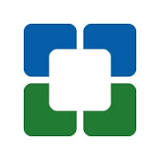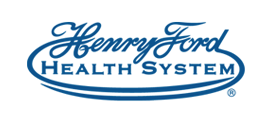GDC-0449 in Treating Patients With Recurrent Glioblastoma Multiforme That Can Be Removed by Surgery
| Status: | Completed |
|---|---|
| Conditions: | Brain Cancer |
| Therapuetic Areas: | Oncology |
| Healthy: | No |
| Age Range: | 18 - Any |
| Updated: | 8/17/2017 |
| Start Date: | February 2010 |
| End Date: | June 2012 |
A Biomarker and Phase II Study of GDC-0449 in Patients With Recurrent Glioblastoma Multiforme
This randomized phase II trial is studying how well GDC-0449 works in treating patients with
recurrent glioblastoma multiforme that can be removed by surgery. GDC-0449 may be effective
in treating patients with glioblastoma multiforme.
recurrent glioblastoma multiforme that can be removed by surgery. GDC-0449 may be effective
in treating patients with glioblastoma multiforme.
PRIMARY OBJECTIVES:
I. 6-month progression-free survival (PFS-6) measured from start of treatment following
surgery.
SECONDARY OBJECTIVES:
I. Toxicity. (Clinical) II. Overall survival. (Clinical) III. Tumor response. Partial
Response (PR) + Complete Response (CR): MacDonald criteria). (Clinical)
Correlative Studies
- Determination of in vivo drug effect in recurrent Glioblastoma Multiform (GBM).
(Correlative studies)
- Determination of in vitro drug effect on CD133+ glioma-derived neurospheres.
(Correlative studies)
- Determination of Sonic Hedgehog pathway activation in primary vs. recurrent GBM.
(Correlative studies)
TERTIARY OBJECTIVES:
I. Correlate clinical outcome (6 mo PFS) with biologic correlates (1-3) above.
OUTLINE: This is a multicenter study. Patients are randomized to 1 of 2 treatment arms.
Arm I: Patients receive oral Hedgehog antagonist GDC-0449 once daily for 7 days before
surgery.
Arm II: Patients do not receive treatment before surgery. Beginning within 28 days after
surgical resection, all patients receive oral Hedgehog antagonist GDC-0449 once daily on days
1-28. Courses repeat every 28 days in the absence of disease progression or unacceptable
toxicity.
Fresh and paraffin-embedded tissue samples are collected for correlative laboratory studies.
After completion of study treatment, patients are followed up every 2 months.
I. 6-month progression-free survival (PFS-6) measured from start of treatment following
surgery.
SECONDARY OBJECTIVES:
I. Toxicity. (Clinical) II. Overall survival. (Clinical) III. Tumor response. Partial
Response (PR) + Complete Response (CR): MacDonald criteria). (Clinical)
Correlative Studies
- Determination of in vivo drug effect in recurrent Glioblastoma Multiform (GBM).
(Correlative studies)
- Determination of in vitro drug effect on CD133+ glioma-derived neurospheres.
(Correlative studies)
- Determination of Sonic Hedgehog pathway activation in primary vs. recurrent GBM.
(Correlative studies)
TERTIARY OBJECTIVES:
I. Correlate clinical outcome (6 mo PFS) with biologic correlates (1-3) above.
OUTLINE: This is a multicenter study. Patients are randomized to 1 of 2 treatment arms.
Arm I: Patients receive oral Hedgehog antagonist GDC-0449 once daily for 7 days before
surgery.
Arm II: Patients do not receive treatment before surgery. Beginning within 28 days after
surgical resection, all patients receive oral Hedgehog antagonist GDC-0449 once daily on days
1-28. Courses repeat every 28 days in the absence of disease progression or unacceptable
toxicity.
Fresh and paraffin-embedded tissue samples are collected for correlative laboratory studies.
After completion of study treatment, patients are followed up every 2 months.
Inclusion Criteria:
- Patients must have histologically proven glioblastoma which is progressive or
recurrent following radiation therapy +/- chemotherapy
- Patients must have measurable contrast-enhancing progressive or recurrent glioblastoma
by MRI imaging prior to starting treatment; patient must be able to tolerate MRIs
- Patients must be eligible for surgical resection according to the following criteria:
- Patient competent to sign consent
- Expectation that the surgeon can resect >= 50% of the Gd-enhancing tumor with low
risk of inducing neurological injury
- Lack of hematologic, cardiac or other medical contraindications to surgery
- Surgery must take place Monday-Thursday, with the exception of patients being
treated at Cleveland Clinic/University Hospitals: these patients may undergo
surgery Monday-Friday
- Patients must have a tumor size ≥ 2.5 cm in diameter in two perpendicular planes
in order to enable correlative studies
- Paraffin embedded tissue must be available from initial surgical resection at
diagnosis (prior to any treatment)
- Patients may have an unlimited number of prior therapy regimens
- Patients must have recovered from severe toxicity of prior therapy; the following
intervals from previous treatments are required to be eligible:
- 3 months from the completion of radiation
- 6 weeks from a nitrosourea chemotherapy
- 3 weeks from a non-nitrosourea chemotherapy
- 4 weeks from any investigational (not FDA-approved) agents
- 2 weeks from administration of a non-cytotoxic, FDA-approved agent (e.g.,
tarceva, hydroxychloroquine, bevacizumab, etc.)
- Patients may be on a non-enzyme-inducing anti-epileptic drug (non-EIAED); they may not
be on an EIAED; if previously on an EIAED, patient must be off for at least 14 days
prior to the first dose of GDC-0449
- Patients must have a Karnofsky performance status >= 60% (i.e. the patient must be
able to care for himself/herself with occasional help from others)
- White blood cells (WBC) ≥ 3,000/mcL
- Absolute neutrophil count ≥ 1,500/mcL
- Platelets ≥ 100,000/mcL
- Total bilirubin ≤ institutional upper limit of normal
- Aspartate aminotransferase (AST)/Alanine aminotransferase (ALT) ≤ 4.0 X institutional
upper limit of normal
- Creatinine within institutional upper limit of normal OR creatinine clearance >= 60
mL/min/1.73 m^2 for patients with creatinine levels above institutional normal
- Patients must be able to provide written informed consent
- The effects of GDC-0449 on the developing human fetus at the recommended therapeutic
dose are unknown; for this reason and because Hh signal pathway inhibitors are known
to be teratogenic, women of child-bearing potential and men must use two forms of
contraception (i.e., barrier contraception and one other method of contraception)
prior to study entry, for the duration of study participation, and for at least 12
months post-treatment; should a woman become pregnant or suspect she is pregnant while
participating in this study, she should inform her treating physician immediately
- Women of childbearing potential are required to have a negative serum pregnancy test
(with a sensitivity of at least 25 milli 0international unit/microliter (mL) within
10-14 days prior to treatment start and be required to agree to have the test repeated
within 24 hours prior to the first dose of GDC-0449 (serum or urine); a pregnancy test
(serum or urine) will be administered every 4 weeks if their menstrual cycles are
regular or every 2 weeks if their cycles are irregular while on study within the
24-hour period prior to the administration of GDC-0449; a positive urine test must be
confirmed by a serum pregnancy test; prior to dispensing GDC-0449, the investigator
must confirm and document the patient's use of two contraceptive methods, dates of
negative pregnancy test, and confirm the patient's understanding of the teratogenic
potential of GDC-0449; women of childbearing potential are defined as follows:
- Patients with regular menses
- Patients with amenorrhea, irregular cycles, or using a contraceptive method that
precludes withdrawal bleeding
- Women who have had a tubal ligation
- Women are considered not to be of childbearing potential for the following reasons:
- The patient has undergone hysterectomy and/or bilateral oophorectomy
- The patient is post-menopausal defined by amenorrhea for at least 1 year in a
woman > 45 years old
- Patients may not be breast-feeding a child
- Patients must have a Mini Mental State Exam score of >= 15
Exclusion Criteria:
- Patients with serious concurrent infection or medical illness, which would jeopardize
the ability of the patient to receive the treatment outlined in this protocol with
reasonable safety, are ineligible
- Patients may not be receiving any other investigational agents
- Patients with a history of allergic reactions attributed to compounds of similar
chemical or biologic composition to GDC-0449 or other agents used in the study are
ineligible
- Patients taking medications with narrow therapeutic indices that are metabolized by
cytochrome P450 (CYP450), including warfarin sodium (Coumadin®) are ineligible
- GDC-0449 inhibits CYP2C8, CYP2C9, and CYP2C19 drug metabolism enzymes in vitro at
concentrations that may be clinically relevant; therefore, caution should be exercised
when dosing GDC-0449 concurrently with medications that are substrates of CYP2C8,
CYP2C9, and CYP2C19 and have narrow therapeutic windows; in addition, GDC-0449 is a
substrate of CYP3A4; however, the in vitro metabolic conversion of GDC-0449 is low;
effects of CYP inducers (e.g., carbamazepine, phenobarbital, phenytoin, rifabutin,
rifampin, St. John's wort, and troglitazone) on clinical concentrations of GDC-0449
are unknown; likewise, the effects of strong inhibitors of CYP3A4 (e.g.,
clarithromycin, erythromycin, itraconazole, ketoconazole, nefazodone, and
telithromycin) on GDC-0449 clinical concentrations are unknown, and caution should be
exercised when dosing GDC-0449 concurrently with inhibitors of CYP3A4
- Patients with malabsorption syndrome or other condition that would interfere with
intestinal absorption are ineligible; patients must be able to swallow capsules
- Patients with clinically important history of liver disease, including viral or other
hepatitis or cirrhosis are ineligible
- Patients with a history of uncontrolled hypocalcemia, hypomagnesemia, hyponatremia or
hypokalemia defined as less than the lower limit of normal for the institution,
despite adequate electrolyte supplementation are excluded from this study
- Patients with uncontrolled intercurrent illness including, but not limited to,
hypertension, ongoing or active infection, symptomatic congestive heart failure,
unstable angina pectoris, cardiac arrhythmia, or psychiatric illness/social situations
that would limit compliance with study requirements, are ineligible
- Pregnant women are excluded from this study because GDC-0449 is an Hh pathway
inhibiting agent with the potential for teratogenic or abortifacient effects; because
there is an unknown but potential risk for adverse events in nursing infants secondary
to treatment of the mother with GDC-0449, breastfeeding should be discontinued if the
mother is treated with GDC-0449
- HIV-positive patients on combination antiretroviral therapy are ineligible because of
the potential for pharmacokinetic interactions with GDC-0449
We found this trial at
9
sites
University of California at Los Angeles The University of California, Los Angeles (UCLA) is an...
Click here to add this to my saved trials
Click here to add this to my saved trials
Dana-Farber Cancer Institute Since it’s founding in 1947, Dana-Farber has been committed to providing adults...
Click here to add this to my saved trials
Click here to add this to my saved trials
Cleveland Clinic Foundation The Cleveland Clinic (formally known as The Cleveland Clinic Foundation) is a...
Click here to add this to my saved trials
Henry Ford Hospital Founded in 1915 by auto pioneer Henry Ford and now one of...
Click here to add this to my saved trials
Click here to add this to my saved trials
Click here to add this to my saved trials
1 Medical Center Blvd
Winston-Salem, North Carolina 27157
Winston-Salem, North Carolina 27157
336-716-2011

Wake Forest University Health Sciences Welcome to Wake Forest Baptist Medical Center, a fully integrated...
Click here to add this to my saved trials



